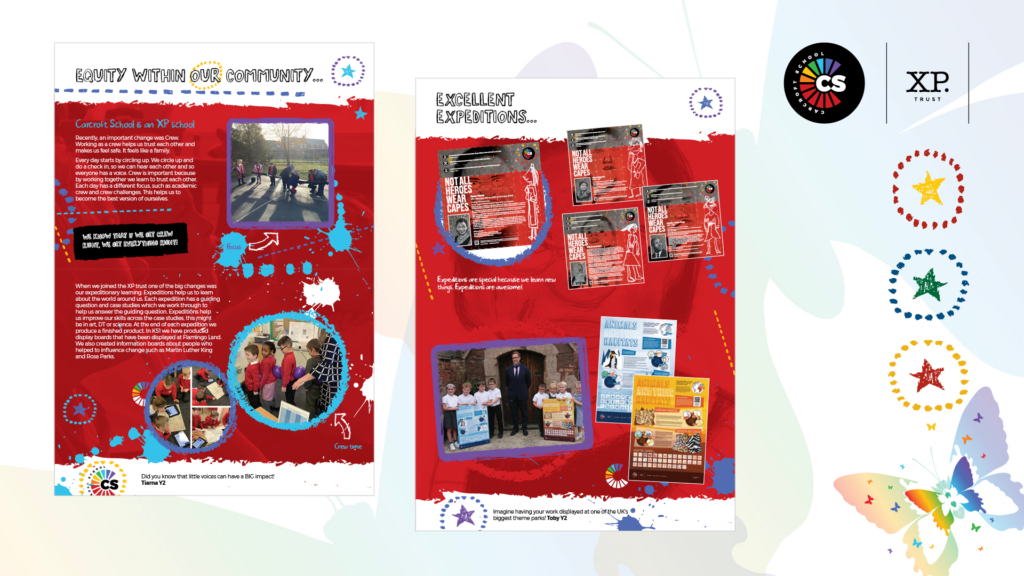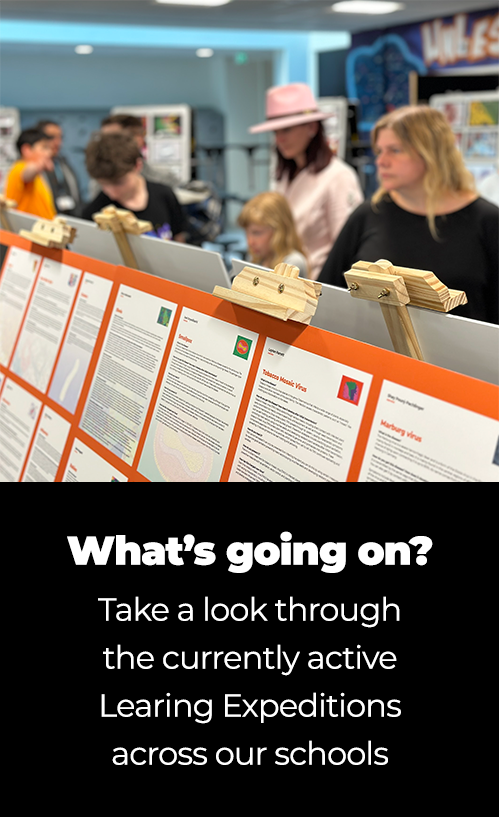Guiding Question: Where do we belong?
Expedition lead: Josh Meade, Anna Wojcik, Claire Dutton, Laura Godley
Curriculum: HUMAN/Arts
Phase/Year group: KS1
Delivery date: Summer 2022
In the Summer of 2022, Year 1 and 2 pupils from primary schools across the XP Trust studied a cross-curricular expedition looking to answer the guiding question, ‘Where do we belong?’
Immersion
As part of hook week, children across the trust completed fieldwork at Beamish. The children were able to experience the excitement and community spirit of the 1950s in the 1950s welfare hall, the first building to open as part of our 1950s Town. as well as enjoying activities in the main hall, finding out about the story of the NHS and life in school rooms from the past.
Crews also ventured out into the local community to explore the surroundings and complete a treasure trial. The children were amazed as they found a buried time capsule full of historical artefacts. The children then spent time exploring and attempting to identify the different artefacts. The children also invited an expert into school to explain how aerial photographs are created using drone technology.
Our Learning
To provide context and to develop background knowledge, the first case study centred around the geography of Doncaster and the local areas of each school. The children learnt how to compare and contrast the different features of areas in the U.K. They then developed their knowledge of maps from the previous expedition, to produce their own maps of the schools and local areas.
The second case study focused on history and how the lives of the children and their schools have changed over time. The children started by engaging with historical sources, such as photographs and old artefacts. They then explored the timescales of changes within the lifetimes of themselves and their school. The crews also interviewed a range of grandparents and teachers from the past to gain a first hand, real-life understanding of the lived past.
The final case study allowed us to continue developing a growing range of art skills, including line drawing, sketching techniques and collage. The children created a sketch of their school, a collage representing the diversity of Doncaster and a modern art version of their school logo. This complemented the skills the children have already developed in the previous expeditions. As artists the children were also encouraged to develop their critique skills to develop and improve their artwork as well as that of others.
Final Product and Celebration of Learning
The final product drew together learning from all three case studies. The product saw the children creating a bespoke prospectus about their school and the local area, which also contributed to a trust-wide prospectus encompassing all of the Trust primaries. Each prospectus displayed elements of the local geography as well as memories from the past about the school and local area. To illustrate the prospectus, children used their newly developed sketching skills to include sketches of the schools and grandparents who had previously been pupils.
The Learning Targets were:
Case Study 1 – Geography
- I can ask and answer geographical questions-
- I can identify the key features of a location in order to say whether it is a city, town, village, coastal or rural area.
- I can use aerial images and plans to recognise landmarks.
Case Study 2 – History
- I can ask questions and find out answers about the past.
- I can recount changes that have occurred in my own lifetime.
- I can use words and phrases to describe the passing of time.
- I can use artefacts, pictures and online sources to find out about the past.
Case Study 3 – RE / Art
- I can name and explore a range of celebrations, worship and rituals in religion, noting similarities where appropriate.
- I can identify and suggest meanings for religious symbols and begin to use a range of religious words.
- I can draw lines of different thickness and size.
- I can show pattern and texture by adding dots and lines.




